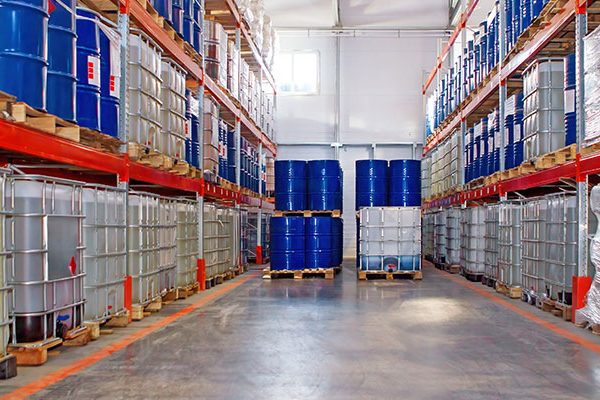Automation is a gift of the modern world. In keeping with the fast pace of digital transformation, even businesses are leveraging data science and automation to reduce man-hours and enhance efficiency. Chatbots to resolve customer queries, sentiment analysis from product reviews, using Machine Learning for price recommendations, sales forecasting, are just few of the many manifestations of the power of tech. In its latest customer-centric move, ECU Worldwide, the world’s leader in Less than Container Load (LCL) consolidation is harnessing the power of digital innovation to simplify processes and augment speed, with automation.
The maverick team of technology enthusiasts at ECU Worldwide identified that the most widely used documents in the shipping industry are shipping instructions and invoices.
Considering the vast amounts of historical data available owing to the global span of its operations, for an organization like ECU Worldwide, a move to go digital first and automate operates at multiple levels.
- Automation, through the use of business logic and structured inputs, enables the removal of man hours in analytical reports, thus improving reporting in real-time.
- Data analytics makes it possible to convert information into actionable insights that combine the strengths of data-driven facts and human expertise and understanding. It helps stakeholders take informed decisions across the spectrum, some examples being setting up pricing, assessing whether historical discounts being run in a particular way need rethinking, implementing guard-rails to enforce best practices and prevent data security or other violations, post mortem analysis of projects to fix issues and ensure continual improvements, etc.
- Predictive modeling through the use of data science works well to give the organization a perspective on the future and carry out cost-effective planning, resource allocation, budgeting and more. Especially in the logistics industry, the capabilities of building predictive models add to the accuracy of sales forecasts and make planning and scheduling of transportation modes and routes more effective.
While data analytics is perfect to get a sense of the current situation, data science builds capabilities for the future and paves the way for cost reduction and profit maximization.
A smart solution for swifter outcomes
Any company involved in ocean freight deals with copious amounts of such documents and spends innumerable man-hours replicating the details. Desirous of offering faster service to customers, they then worked on finding an in-house solution to automate it.
Extracting data from a shipping instruction, invoice or accounts payable, can take up to 15 minutes when done manually. Not only is this process mundane, but also time consuming. But now, with this new system developed using a cognitive service from Microsoft Azure, the process has been drastically simplified – it takes less than 10 seconds per document.
For shipping instructions, the group’s state-of-the-art digital platform, ECU360, has an option to upload PDF files, whereby the data gets digitally scanned and uploaded automatically, reducing the effort of manual entry.
Automation of invoices has already been seamlessly implemented across Belgium, the USA, and a few European Union countries; while the automation of shipping instructions has been implemented in the United Kingdom.
“Since this process has been developed in-house, it offers unparalleled flexibility in terms of customization and scalability as per our requirements, which would be difficult to get in a readymade software,” says Vaishnav Shetty, Chief Digital Officer, ECU Worldwide. The logistics giant is in the process of rolling out this innovation across offices and is looking to automate a significant percentage of global invoices and shipping instructions by the end of this quarter
A win-win all the way
Recent numbers are proof of the benefits of automation. Early adopters of automation have reported better customer satisfaction, a 10-15% improvement in efficiency and an increase of up to 10% in sales potential. In a 2021 Zapier study, 63% SMEs stated that automation helped them survive the pandemic with 88% indicating that it helps them compete better with bigger businesses. Forbes has tagged automation as the #2 biggest business trend and #1 top tech trend that will drive businesses in 2022.
Even ECU Worldwide’s digital innovation has tremendous importance for the organization’s customers and vendors. In a world where time is money, saving close to 15 minutes per document translates into many productive hours saved. Hence, they benefit from a swifter turnaround time and better efficiency in global cargo movements across 180 countries and door-to-door deliveries in over 50 markets.
By drastically simplifying the workload and eliminating one level of repetitive and mundane tasks, automation enables the team at ECU Worldwide to focus on more innovative tasks and exception management requirements. The increased accuracy also minimizes the margin for error that is a part and parcel of manual processes. This innovative automation exemplifies the organization’s commitment to its core values of Innovation and Execution and Customer Centricity.
Conclusion
The future of automation brings with it a flurry of innovations that will propel the logistics industry. No-code technologies will bring down the cost of automation and Bots and AI will take the brunt of the most monotonous, technical work, leaving all creative and people-oriented activities for humans. By freeing up time and giving a skilled and talented workforce the opportunity to think out-of-the-box for disruptive solutions, automation can thus tremendously augment the capabilities of an organization.












